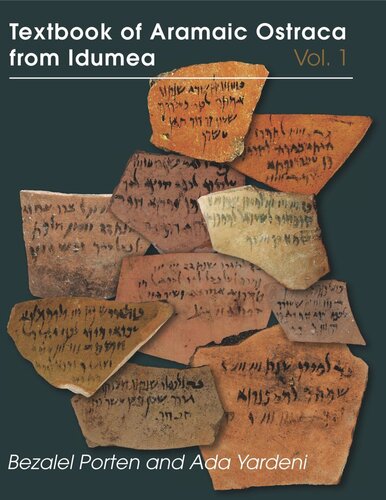

Most ebook files are in PDF format, so you can easily read them using various software such as Foxit Reader or directly on the Google Chrome browser.
Some ebook files are released by publishers in other formats such as .awz, .mobi, .epub, .fb2, etc. You may need to install specific software to read these formats on mobile/PC, such as Calibre.
Please read the tutorial at this link: https://ebookbell.com/faq
We offer FREE conversion to the popular formats you request; however, this may take some time. Therefore, right after payment, please email us, and we will try to provide the service as quickly as possible.
For some exceptional file formats or broken links (if any), please refrain from opening any disputes. Instead, email us first, and we will try to assist within a maximum of 6 hours.
EbookBell Team

4.0
6 reviewsSome 340 Aramaic ostraca of the Persian and Hellenistic periods have been excavated at 32 sites in Israel, from Yokneam in the north to Eilat in the south, with Arad and Beersheba being the main contributory sites. By far, however, the largest cache of texts is what has come to be known as “the Idumean ostraca”. These did not come from formal excavations but began to appear on the antiquities market in 1991. Since then, some 2,000 ostraca have reached 9 museums and libraries and 21 private collections. Of these, the majority are still not formally published, and in this volume (and those to follow), Bezalel Porten undertakes to provide a comprehensive edition of all these texts, in many cases as an editio princeps. Porten, with the expert epigraphic assistance of Ada Yardeni and hand-copies by her as well, here provides the first volume of texts, organized by “dossier” based on the primary personage cited in the text. Color photographs (where available), ceramic descriptions, hand-copies, transcription, translation, and commentary are provided for each text, along with figures and tables, and introductions and summaries of each dossier. An included CD contains a catalogue of all the texts and three color key-word-in-context concordances, for words, personal names, and months for the entire corpus. This publication will become the primary resource for information on these texts.